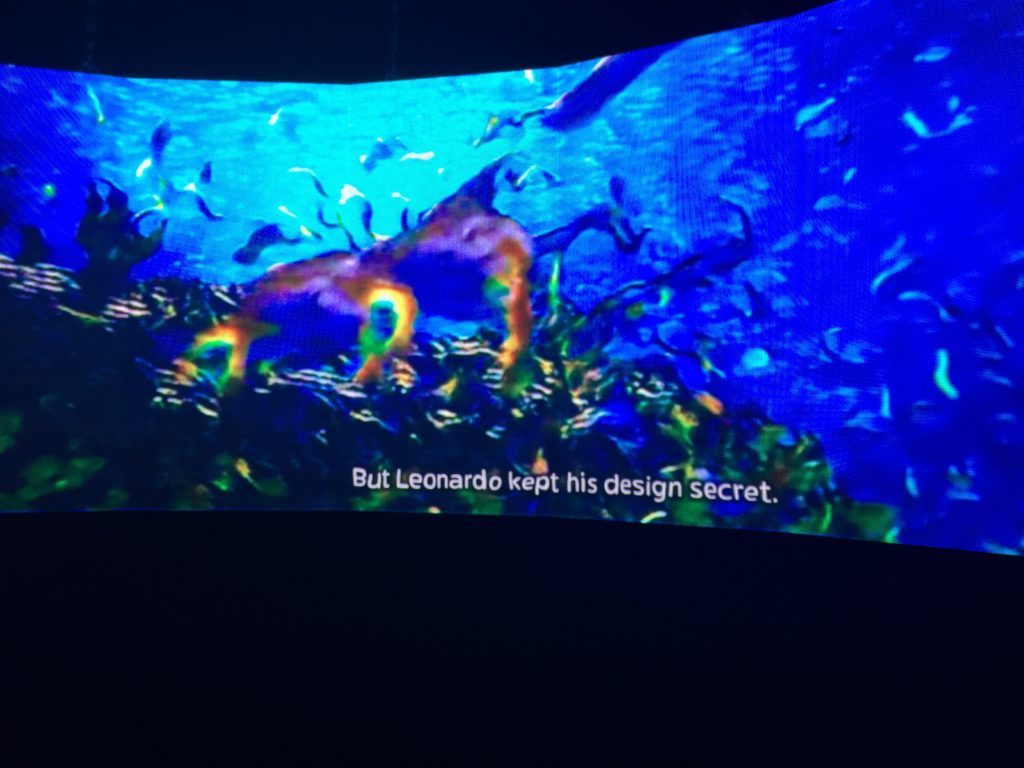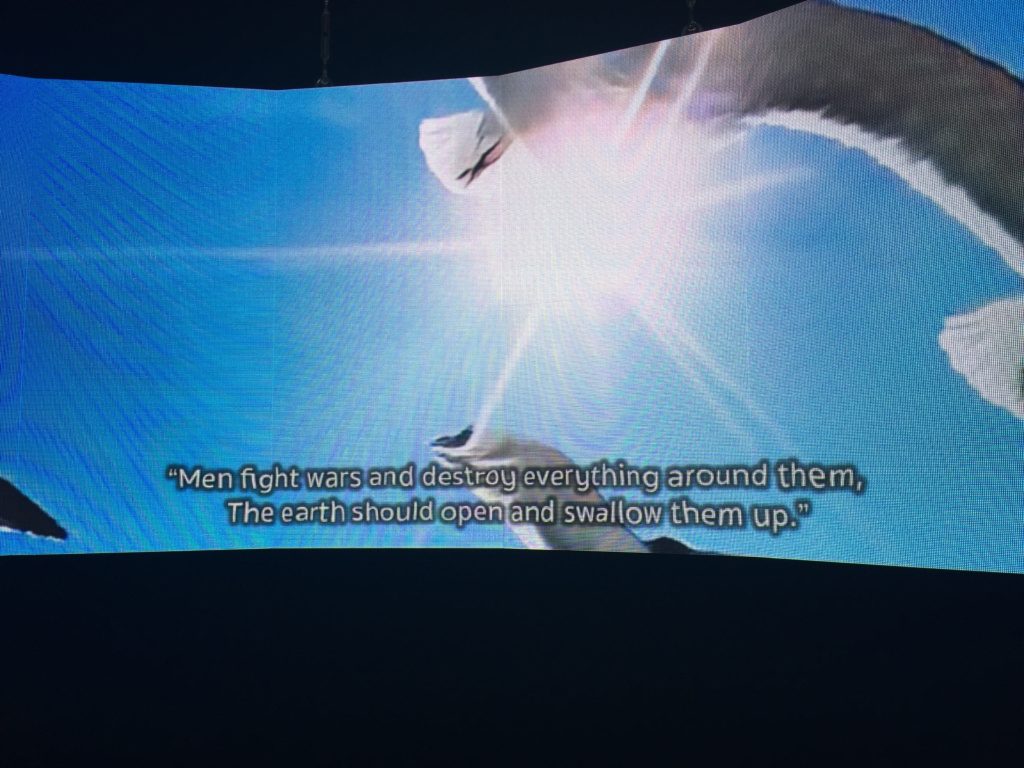Art World
Artist Hito Steyerl Slams a Weapons Manufacturer for Appropriating Leonardo da Vinci’s Name in Her Work for the Venice Biennale
The Renaissance polymath kept his designs for a deadly submarine secret for fear it'd be misused.

The Renaissance polymath kept his designs for a deadly submarine secret for fear it'd be misused.

Naomi Rea

The German artist Hito Steyerl has used her work in the Venice Biennale to call out one of the world’s biggest weapons companies for appropriating Leonardo da Vinci’s name.
In 2017, after a series of public-relations debacles, the Italian defense contractor Finmeccanica changed its name to Leonardo, “innovator in his times and recognized as a universal symbol of genius and creativity,” it said in a statement at the time.
But in a gentle voiceover in Steyerl’s immersive three-screen installation, which takes viewers for an underwater ride in a deadly submarine like the one designed by Leonardo da Vinci, she points out that the Renaissance artist valued life and would not appreciate a warmonger invoking his name.
Although Leonardo da Vinci invented weapons such as an armored car, a giant crossbow, and a triple-barrel cannon, he concealed many of his designs to protect the world from their destructive capabilities.
His 1515 design that imagined a proto-submarine could have been used to thwart attacks on Venice from the Ottoman Empire, but the artist decided to keep his invention secret. “I do not publish nor divulge it by reason of the evil nature of men who would use it as a means of destruction at the bottom of the sea by sending ships to the bottom, and sinking them together with the men in them,” he wrote.

Hito Steyerl, Leonardo’s Submarine (2019). Photo by Naomi Rea.
Steyerl used predictive artificial intelligence to generate a fictional video simulating Venice’s waterways, palazzos, and skies. The work, titled Leonardo’s Submarine, targets Finmeccanica, which has supplied weapons used by the Turkish armed forces against civilians in Syria and sold war planes to Saudi Arabia.
The art world is in the throes of a revolution against the practice of so-called “artwashing,” in which controversial corporations, including drug manufacturers, homophobic bus companies, or arms dealers, cover up their immoral businesses through arts sponsorship.
Steyerl has previously called for the removal of the Sackler family name from gallery walls as a way to hold them accountable for their role in the opioid crisis ripping through the United States. Other artists have previously targeted institutions, such as London’s National Gallery, for accepting funding from Finnmeccanica.
“He who does not value life does not deserve it,” wrote Leonardo. “Never destroy another life through rage, or through malice.”